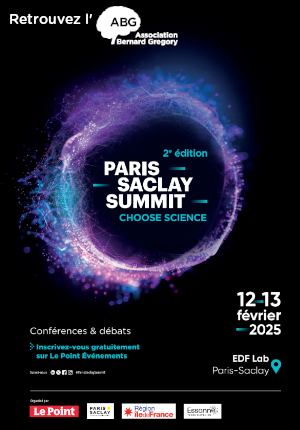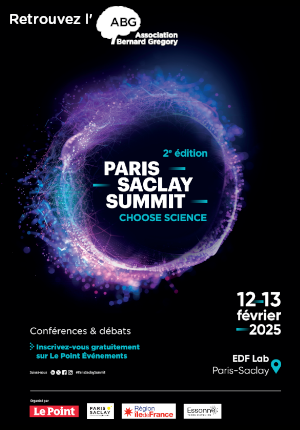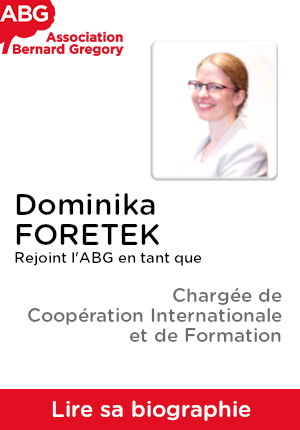Lien optique aéroporté pour la physique fondamentale, géodésie chronométrique et le transfert de fréquence // Airborne optical link for fundamental physics, chronometric geodesy and frequency dissemination
|
ABG-128264
ADUM-60236 |
Thesis topic | |
| 2025-02-01 |
Observatoire de Paris
Paris - France
Lien optique aéroporté pour la physique fondamentale, géodésie chronométrique et le transfert de fréquence // Airborne optical link for fundamental physics, chronometric geodesy and frequency dissemination
- Earth, universe, space sciences
Optique active, Plateforme aéroportée/spatiale, Mesures de phase, Turbulence atmosphérique, telecom optique
Active Optics, Airborne/space platforms , Phase measurements, Atmospheric turbulnce, optical communications
Active Optics, Airborne/space platforms , Phase measurements, Atmospheric turbulnce, optical communications
Topic description
Les liaisons laser en espace libre de nouvelle génération utilisent la phase de la porteuse optique pour des mesures scientifiques, par exemple pour comparer des horloges distantes, ou pour mesurer des distances avec un bruit très faible (détection d'ondes gravitationnelles, télémétrie optique Doppler). De plus, la modulation de la phase optique permet la transmission de données à très haut débit, comme cela se fait déjà dans les fibres optiques.
Ces mesures sont ensuite utilisées pour, par exemple, déterminer la différence de champ gravitationnel entre les emplacements de deux horloges distantes en mesurant leur décalage de fréquence relativiste (décalage vers le rouge gravitationnel ou effet Einstein). Cette nouvelle méthode, rendue possible par les progrès spectaculaires des horloges atomiques, est connue sous le nom de « géodésie chronométrique » [1,2] et nécessite une liaison de fréquence ultrastable entre les horloges distantes.
Un projet en cours TOFU (Transfert Optique de Fréquence Ultrastable) en collaboration entre le SYRTE/CNES et l'Université d'Australie Occidentale (UWA) a réalisé une première liaison optique en espace libre entre deux bâtiments des locaux du CNES à Toulouse [3]. Depuis, le projet s'est concentré sur l'extension de la liaison à une plate-forme aéroportée. Les premiers essais avec un ballon captif sur le site d'essais du CNES à Aire sur Adour ont eu lieu en 2022-2024. Ils ont montré des résultats de classe mondiale [4]. Ces essais seront poursuivis et suivis par des tests sur des plateformes à plus haute altitude (jusqu'à la stratosphère) et en utilisant un relais optique actif.
La thèse concerne la poursuite de cette activité, en collaboration avec des chercheurs et ingénieurs permanents, et à la suite de deux autres doctorants (2020-2023) et (2022-2025). Le candidat participera à la réalisation et à l'amélioration des terminaux sol et aéroportés (asservissements, étalonnage) et aux tests en laboratoire, entre bâtiments et vers des plateformes aéroportées. Il/elle sera au centre de la conception et de la mise en œuvre de l'équipement, et de son fonctionnement sur un ballon.
[1] Lion, G.; Panet, I.; Wolf, P.; Guerlin, C.; Bize, S. & Delva, P. Determination of a high spatial resolution geopotential model using atomic clock comparisons, Journal of Geodesy, 2017, 91, 597.
[2] Denker, H.; Timmen, L.; Voigt, C.; Weyers, S.; Peik, E.; Margolis, H. S.; Delva, P.; Wolf, P. & Petit, G. Geodetic methods to determine the relativistic redshift at the level of 10-18 in the context of international timescales: a review and practical results, Journal of Geodesy, 2017, 92, 487.
[3] Dix-Matthews, B. P.; Schediwy, S. W.; Gozzard, D. R.; Savalle, E.; Esnault, F.-X.; Leveque, T.; Gravestock, C.; D'Mello, D.; Karpathakis, S.; Tobar, M. & Wolf, P., Point-to-Point Stabilised Optical Frequency Transfer with Active Optics, Nature Communications, 2021, 12, 515.
[4] Maron, N.; Fernandez, S.; Esnault, F.-X.; Lévèque, T.; Muzeau, T. & Wolf, P.,Free space optical link to a tethered balloon for frequency transfer and chronometric geodesy,Opt. Express, 2024, 32, 4267-4276.
------------------------------------------------------------------------------------------------------------------------------------------------------------------------
------------------------------------------------------------------------------------------------------------------------------------------------------------------------
Next-generation free-space laser links use the phase of the optical carrier for scientific measurements, for example to compare distant clocks, or to measure distances with very low noise (gravitational wave detection, optical Doppler ranging). In addition, the modulation of the optical phase allows the transmission of data at very high speed, as already done in optical fibers.
These measurements are subsequently used to, for example, determine the gravitational field difference between the locations of two distant clocks by measuring their relativistic frequency shift (gravitational redshift). This new method, made possible by the spectacular advancement of atomic clocks, is known as 'chronometric geodesy' [1,2] and requires an ultrastable frequency link between remote clocks.
An ongoing project TOFU (Transfert Optique de Fréquence Ultrastable) in collaboration between SYRTE/CNES and the University of Western Australia (UWA) has realized a first free space optical link between two buildings at CNES premises in Toulouse [3]. Since then the project has focused on extending the link to an airborne platform. First tests with a captive balloon at the CNES test site in Aire sur Adour took place in 2022-2024. They have shown world class results [4]. Those tests will be continued and followed by tests on higher altitude platforms (up to stratospheric) and using an active optical relay.
The thesis concerns the continuation of this activity, together with permanent staff and following two other PhD students (2020-2023) and (2022-2025). The candidate will participate in the realization and improvement of the ground and airborne terminals (servo-controls, calibration) and tests in the lab, between buildings and to airborne platforms. He/she will be at the center of the design and implementation of the equipment, and its operation on a balloon.
[1] Lion, G.; Panet, I.; Wolf, P.; Guerlin, C.; Bize, S. & Delva, P. Determination of a high spatial resolution geopotential model using atomic clock comparisons, Journal of Geodesy, 2017, 91, 597.
[2] Denker, H.; Timmen, L.; Voigt, C.; Weyers, S.; Peik, E.; Margolis, H. S.; Delva, P.; Wolf, P. & Petit, G. Geodetic methods to determine the relativistic redshift at the level of 10-18 in the context of international timescales: a review and practical results, Journal of Geodesy, 2017, 92, 487.
[3] Dix-Matthews, B. P.; Schediwy, S. W.; Gozzard, D. R.; Savalle, E.; Esnault, F.-X.; Leveque, T.; Gravestock, C.; D'Mello, D.; Karpathakis, S.; Tobar, M. & Wolf, P., Point-to-Point Stabilised Optical Frequency Transfer with Active Optics, Nature Communications, 2021, 12, 515.
[4] Maron, N.; Fernandez, S.; Esnault, F.-X.; Lévèque, T.; Muzeau, T. & Wolf, P.,Free space optical link to a tethered balloon for frequency transfer and chronometric geodesy,Opt. Express, 2024, 32, 4267-4276.
------------------------------------------------------------------------------------------------------------------------------------------------------------------------
------------------------------------------------------------------------------------------------------------------------------------------------------------------------
Début de la thèse : 01/10/2025
Ces mesures sont ensuite utilisées pour, par exemple, déterminer la différence de champ gravitationnel entre les emplacements de deux horloges distantes en mesurant leur décalage de fréquence relativiste (décalage vers le rouge gravitationnel ou effet Einstein). Cette nouvelle méthode, rendue possible par les progrès spectaculaires des horloges atomiques, est connue sous le nom de « géodésie chronométrique » [1,2] et nécessite une liaison de fréquence ultrastable entre les horloges distantes.
Un projet en cours TOFU (Transfert Optique de Fréquence Ultrastable) en collaboration entre le SYRTE/CNES et l'Université d'Australie Occidentale (UWA) a réalisé une première liaison optique en espace libre entre deux bâtiments des locaux du CNES à Toulouse [3]. Depuis, le projet s'est concentré sur l'extension de la liaison à une plate-forme aéroportée. Les premiers essais avec un ballon captif sur le site d'essais du CNES à Aire sur Adour ont eu lieu en 2022-2024. Ils ont montré des résultats de classe mondiale [4]. Ces essais seront poursuivis et suivis par des tests sur des plateformes à plus haute altitude (jusqu'à la stratosphère) et en utilisant un relais optique actif.
La thèse concerne la poursuite de cette activité, en collaboration avec des chercheurs et ingénieurs permanents, et à la suite de deux autres doctorants (2020-2023) et (2022-2025). Le candidat participera à la réalisation et à l'amélioration des terminaux sol et aéroportés (asservissements, étalonnage) et aux tests en laboratoire, entre bâtiments et vers des plateformes aéroportées. Il/elle sera au centre de la conception et de la mise en œuvre de l'équipement, et de son fonctionnement sur un ballon.
[1] Lion, G.; Panet, I.; Wolf, P.; Guerlin, C.; Bize, S. & Delva, P. Determination of a high spatial resolution geopotential model using atomic clock comparisons, Journal of Geodesy, 2017, 91, 597.
[2] Denker, H.; Timmen, L.; Voigt, C.; Weyers, S.; Peik, E.; Margolis, H. S.; Delva, P.; Wolf, P. & Petit, G. Geodetic methods to determine the relativistic redshift at the level of 10-18 in the context of international timescales: a review and practical results, Journal of Geodesy, 2017, 92, 487.
[3] Dix-Matthews, B. P.; Schediwy, S. W.; Gozzard, D. R.; Savalle, E.; Esnault, F.-X.; Leveque, T.; Gravestock, C.; D'Mello, D.; Karpathakis, S.; Tobar, M. & Wolf, P., Point-to-Point Stabilised Optical Frequency Transfer with Active Optics, Nature Communications, 2021, 12, 515.
[4] Maron, N.; Fernandez, S.; Esnault, F.-X.; Lévèque, T.; Muzeau, T. & Wolf, P.,Free space optical link to a tethered balloon for frequency transfer and chronometric geodesy,Opt. Express, 2024, 32, 4267-4276.
------------------------------------------------------------------------------------------------------------------------------------------------------------------------
------------------------------------------------------------------------------------------------------------------------------------------------------------------------
Next-generation free-space laser links use the phase of the optical carrier for scientific measurements, for example to compare distant clocks, or to measure distances with very low noise (gravitational wave detection, optical Doppler ranging). In addition, the modulation of the optical phase allows the transmission of data at very high speed, as already done in optical fibers.
These measurements are subsequently used to, for example, determine the gravitational field difference between the locations of two distant clocks by measuring their relativistic frequency shift (gravitational redshift). This new method, made possible by the spectacular advancement of atomic clocks, is known as 'chronometric geodesy' [1,2] and requires an ultrastable frequency link between remote clocks.
An ongoing project TOFU (Transfert Optique de Fréquence Ultrastable) in collaboration between SYRTE/CNES and the University of Western Australia (UWA) has realized a first free space optical link between two buildings at CNES premises in Toulouse [3]. Since then the project has focused on extending the link to an airborne platform. First tests with a captive balloon at the CNES test site in Aire sur Adour took place in 2022-2024. They have shown world class results [4]. Those tests will be continued and followed by tests on higher altitude platforms (up to stratospheric) and using an active optical relay.
The thesis concerns the continuation of this activity, together with permanent staff and following two other PhD students (2020-2023) and (2022-2025). The candidate will participate in the realization and improvement of the ground and airborne terminals (servo-controls, calibration) and tests in the lab, between buildings and to airborne platforms. He/she will be at the center of the design and implementation of the equipment, and its operation on a balloon.
[1] Lion, G.; Panet, I.; Wolf, P.; Guerlin, C.; Bize, S. & Delva, P. Determination of a high spatial resolution geopotential model using atomic clock comparisons, Journal of Geodesy, 2017, 91, 597.
[2] Denker, H.; Timmen, L.; Voigt, C.; Weyers, S.; Peik, E.; Margolis, H. S.; Delva, P.; Wolf, P. & Petit, G. Geodetic methods to determine the relativistic redshift at the level of 10-18 in the context of international timescales: a review and practical results, Journal of Geodesy, 2017, 92, 487.
[3] Dix-Matthews, B. P.; Schediwy, S. W.; Gozzard, D. R.; Savalle, E.; Esnault, F.-X.; Leveque, T.; Gravestock, C.; D'Mello, D.; Karpathakis, S.; Tobar, M. & Wolf, P., Point-to-Point Stabilised Optical Frequency Transfer with Active Optics, Nature Communications, 2021, 12, 515.
[4] Maron, N.; Fernandez, S.; Esnault, F.-X.; Lévèque, T.; Muzeau, T. & Wolf, P.,Free space optical link to a tethered balloon for frequency transfer and chronometric geodesy,Opt. Express, 2024, 32, 4267-4276.
------------------------------------------------------------------------------------------------------------------------------------------------------------------------
------------------------------------------------------------------------------------------------------------------------------------------------------------------------
Début de la thèse : 01/10/2025
Funding category
Funding further details
Presentation of host institution and host laboratory
Observatoire de Paris
Institution awarding doctoral degree
Observatoire de Paris
Graduate school
127 Astronomie et Astrophysique d'Ile de France
Candidate's profile
Le travail sera principalement expérimental en optique espace libre et fibré, optique adaptative, contrôle-commande, mesures de phase, avec des activités couvrant toute la chaîne : conception, production et tests en laboratoire et sur ballons. Nous recherchons un étudiant très motivé, désireux de s'intégrer dans une équipe existante pour apprendre à concevoir, développer et exploiter des technologies et méthodes nouvelles et inédites pour des mesures de précision ultime dans des conditions réelles sur le terrain.
The work will be mainly experimental in free-space and fibre optics, adaptive optics, control and command, phase measurements, with activities that cover the entire chain: design, production and tests in the laboratory and on balloons. We are looking for a highly motivated student, eager to integrate into an existing team to learn to design, develop and operate new and unprecedented technology and methods for ultimate precision measurements in real-life conditions in the field.
The work will be mainly experimental in free-space and fibre optics, adaptive optics, control and command, phase measurements, with activities that cover the entire chain: design, production and tests in the laboratory and on balloons. We are looking for a highly motivated student, eager to integrate into an existing team to learn to design, develop and operate new and unprecedented technology and methods for ultimate precision measurements in real-life conditions in the field.
2025-04-19
Apply
Close
Vous avez déjà un compte ?
Nouvel utilisateur ?
More information about ABG?
Get ABG’s monthly newsletters including news, job offers, grants & fellowships and a selection of relevant events…
Discover our members
 Institut de Radioprotection et de Sureté Nucléaire - IRSN - Siège
Institut de Radioprotection et de Sureté Nucléaire - IRSN - Siège  Aérocentre, Pôle d'excellence régional
Aérocentre, Pôle d'excellence régional  MabDesign
MabDesign  CESI
CESI  Généthon
Généthon  MabDesign
MabDesign  Institut Sup'biotech de Paris
Institut Sup'biotech de Paris  Groupe AFNOR - Association française de normalisation
Groupe AFNOR - Association française de normalisation  ONERA - The French Aerospace Lab
ONERA - The French Aerospace Lab  CASDEN
CASDEN  PhDOOC
PhDOOC  SUEZ
SUEZ  Ifremer
Ifremer  ADEME
ADEME  TotalEnergies
TotalEnergies  ANRT
ANRT  Laboratoire National de Métrologie et d'Essais - LNE
Laboratoire National de Métrologie et d'Essais - LNE  Nokia Bell Labs France
Nokia Bell Labs France  Tecknowmetrix
Tecknowmetrix







